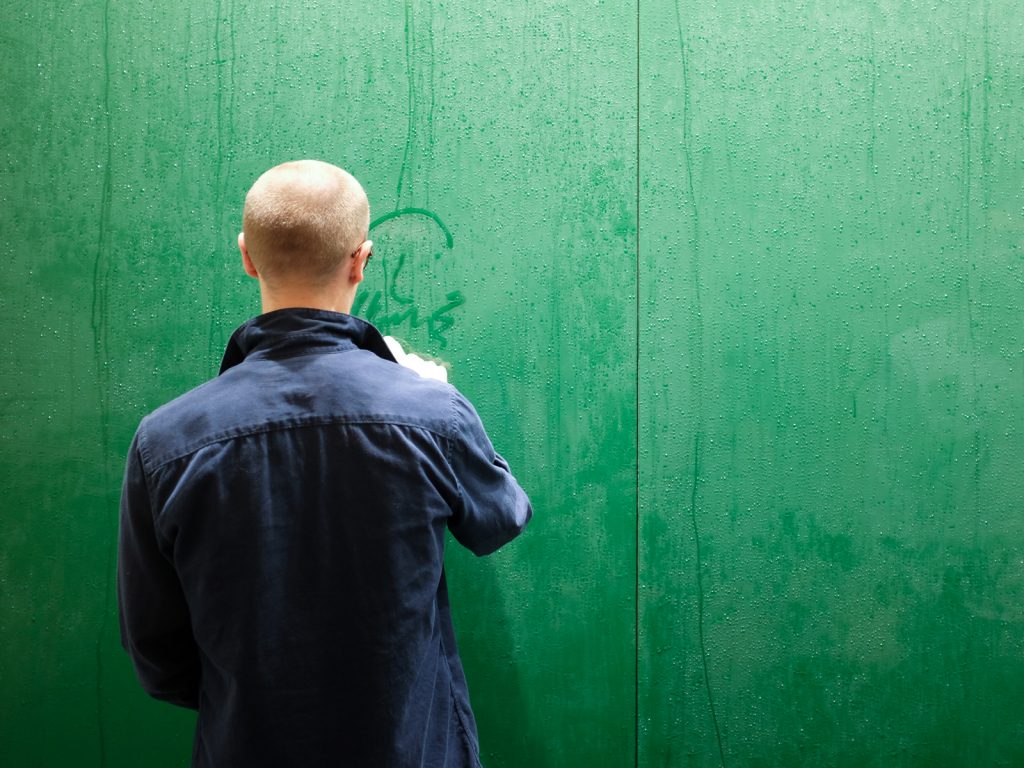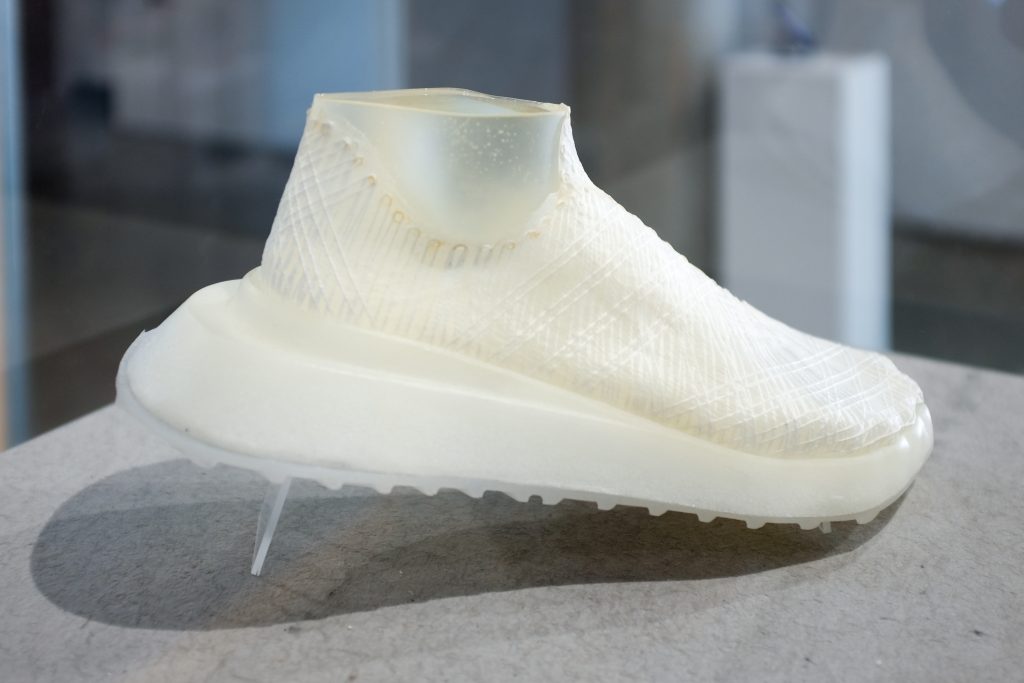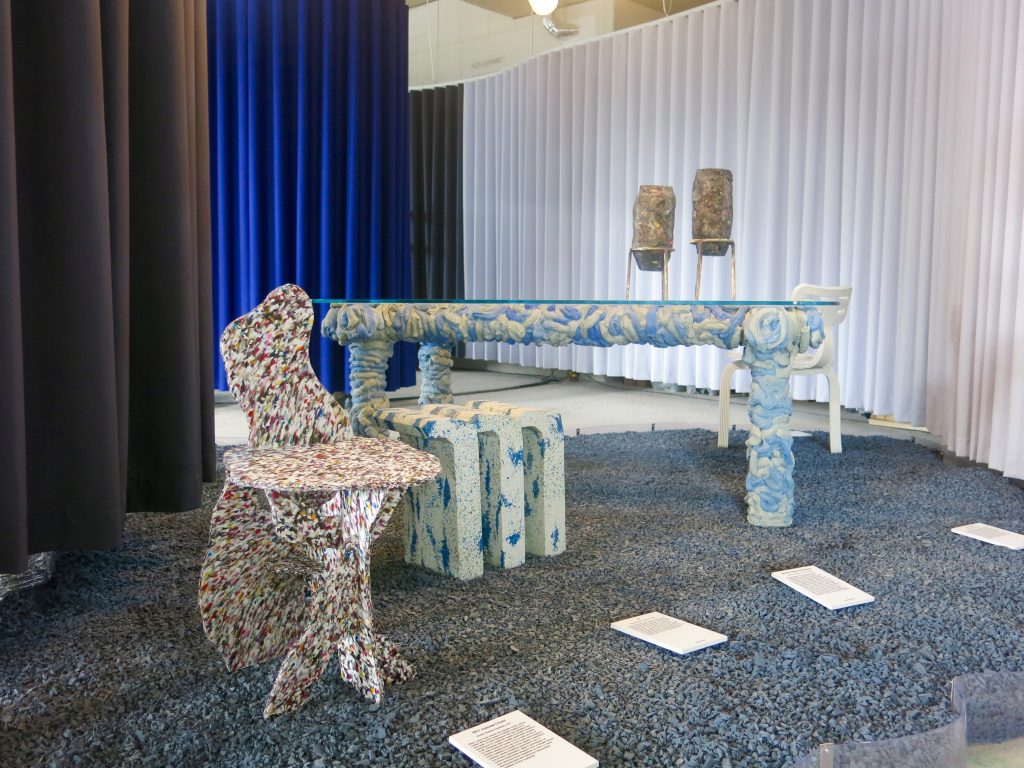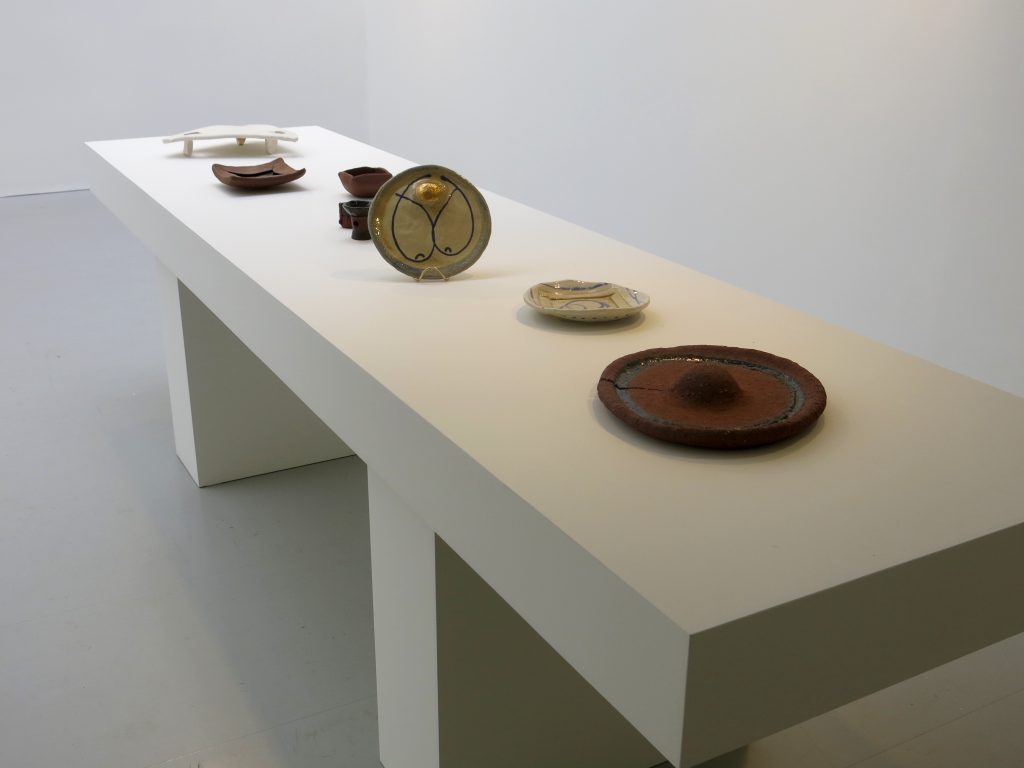Surprising Materials at London Design Festival 2018
From sisal beasts to printed bacteria and salmon skins, all at this year’s magnificent event

At this year’s London Design Festival (LDF), designers worked with surprising materials to showcase projects employing everything from high-tech solutions to unexpected but traditional fibers. Plastics were repurposed, as were the skins of fish. As-yet-unseen materials were printed. And so much more came to light. Here are some of our favorite projects and pieces from the festival’s King’s Cross Design Route, the London Design Biennale and Shoreditch Design Triangle.

“Sisal Sanctum” by Fernando Laposse
“Sisal Sanctum” is a good example of the overall movement to return to eco-friendly, traditional materials. Sisal is made from a species of agave cactus found in Mexico, and was previously used for fishing nets and ropes; it was phased out in the ’40s when plastic became popular. The comeback is welcome—the hardy material is beautiful, as well as practical. Designer Fernando Laposse’s comfy, hairy benches and walls made from sisal (in cooperation with Mayan sisal harvesters) and fun “Guardian” figure proves that the material definitely deserves its revival.

“Disobedience” by Nassia Inglessis
The theme of the 2018 London Design Biennale is “Emotional States.” The installation that welcomes the visitors to the courtyard of Somerset House is an excellent interpretation of such concept. Balancing between architecture and design, “Disobedience” is a 17-meter-long walk surrounded by kinetic walls. A metallic structure holds custom-designed bricks from recycled plastic. The interaction is truly emotional as the small space between the walls opens as visitors walk along. Designer Nassia Inglessis conceived a “disobedient” structure, as well as one of the most instagrammed installations of the entire Design Festival.

“Matter to Matter” by Arthur Analts
The national Latvian participation at London Design Biennale 2018 earned the Best Design Medal. And it’s well deserved, because Arthur Analts’ work is poetic, high-tech and makes people smile at the same time. Despite its name, “Matter to Matter” is one of the most immaterial installations we experienced. The room is filled with a fresh perfume that evokes nature, but the real anchor is a large green glazed glass wall covered with dew. The tiny water drops originate from a sophisticated yet invisible technology and visitors are spontaneously driven to enact a very simple gesture from their childhood, that is drawing on glass with their fingers. The messages are temporary because new drops of water will delete them in seconds.

“Hyper Real” by Tom Dixon
Reality can be digitally altered in furniture and upholstery, as demonstrated by Tom Dixon and his production partners in “Hyper Real.” On display at Coal Office’s Gallery in King’s Cross, the exhibition showcases carpets by Ege and printed leather by Bill Amberg. In both cases, the effect is incredible and the original materials lose their nature thanks to hi-res prints. Leather becomes wrinkled metal or stone, wool becomes bark in a constant illusionistic approach to common materials.

“This is grown” by Jen Keane
“Creative Unions” is a showcase of work from notable best grads from Central Saint Martins. Their creativity is always a reflection of great inspiration and indicates some of the ways we can expect design in the future. With “This is grown,” Jen Keane wants to address the problem of micro-plastic pollution. She invented a process of microbial weaving, by which bacteria grow and make a strong, lightweight and durable material, similar to plastic but entirely sustainable. And you can make shoes, too.

“Mending Portraits” by Andrea Liu
Experimentation on materials drove Andrea Liu to tanning salmon skin. Even though the idea of using fish skin is not new, she elaborated on a process that is completely sustainable and chemical free. Then, she went even further, cutting fish skin into stripes that are then weaved. She also used this material as the base for embroideries inspired by “ganseys,” the woolen sweaters worn by fishermen. “Mending Portraits” melts past and future into unique and highly experimental objects.

PlasticScene
One of the most fascinating exhibitions at LDF this year, PlasticScene looks at how design studios are using plastic waste to create new, weirdly beautiful furniture pieces and objects. It’s in a fitting location, an old gas production plant in the formerly industrial backstreets around King’s Cross Station. Like the area, the furniture in PlasticScene has been reborn as something more exquisite: a wall hanging made from old shoelaces, a colorful tray from pressed polyprophylene and paper pulp, a nineties-inspired chair made from thermoset resins and another made from recycled synthetics, like CDs.

J B Blunk at Kate MacGarry
An unusual addition to LDF is the JB Blunk exhibition at the Kate MacGarry gallery in Shoreditch. Blunk isn’t a designer but an artist. Still, his beautiful ceramic pieces are too inspiring to miss. Made between 1975 and 1990, their craftsmanship and beauty have a naive edge that also feels very modern. It’s well worth swinging by the gallery space when doing the design rounds.

Ready Made Go
The Ready Made Go Project is unique to the Ace Hotel in Shoreditch. Every year, a number of London-based designers create brand new products for use at the hotel in time for the festival. Since there’s a lot of wear and tear to the products, they have to be sturdy—but still beautiful. Minimalux’s cake stand, which is new for this year, is a great example. Made from hand-polished black quartz discs and vapor-blasted brass, these cake stands will be used for afternoon tea at Ace’s restaurant Hoi Polloi. It’s a modern update on the classic china cake stands, with the quartz adding a luxurious feel.
Also at Ready Made Go, one will find the “Raised Ground” wall hanging by Abigail Booth of Forest + Found. The pattern is crafted using dye drawn from the pigment of a clay dug from the foundations of an East London townhouse, giving the piece a truly local connection. It will hang in one of the hotel’s suites.












